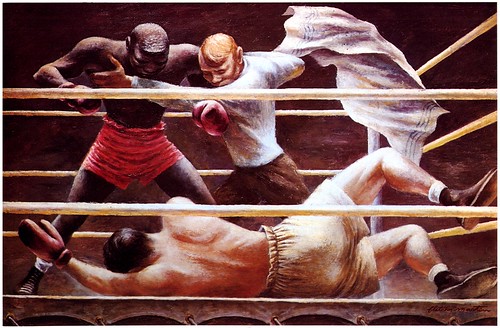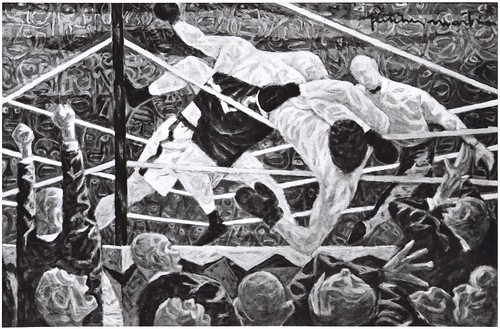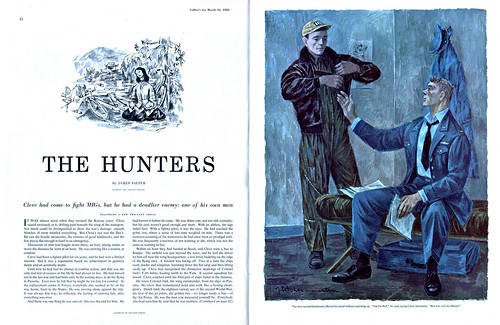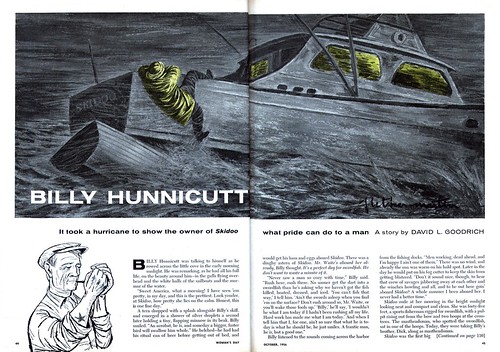
One observer said, "I have heard Martin talk of dynamite charges with a foreman on a construction site while continuing to work on a half-finished watercolour." As a war correspondent for Life magazine he is said to have "moved among the military with ease, understanding the enlisted man's experience at first hand."

And he is elsewhere described as "the self-taught ex-prize fighter who looked like a pirate of the Spanish Main but painted with a great generosity of spirit."

During the 40's and 50's Martin kept one foot in the world of fine arts and the other in the realm of illustration. He received many commissions for sports-themed paintings but he was also commissioned to illustrate books and, thanks to his reputation as a documentarian, established by his Life magazine assignments, he was asked by the Lucky Strikes Cigarette Company to travel to North Carolina and paint scenes of tobacco production.
In 1950 Abbott Laboratories comissioned the artist to visually document the health conditions among many native North American tribes. He travelled over 20,000 miles on assignment to thirteen reservations and to Alaska. His efforts resulted in a Merit award from the Chicago Art Directors Club.

During this busy period Martin's style evolved and he began to place more importance on colour - but always at the core of each piece was his belief that design was the foundation upon which all art must be built.
"The design is the scaffolding of the picture," said Martin. "It is the trunk and the branches for the foliage and fruit - the foliage and fruit of value and color. Design is the force that maintains order in the composition and conducts the eye through it, revealing unexpected delights for the vision of the spectator."

In 1955 Fletcher Martin won a Gold Medal from the New York Art Director's Club - and it is around that time that his work began appearing in Collier's magazine. He was also receiving assignments from Sports Illustrated (of course) and Woman's Day.
This, for me, represents an important turning point in the history of contemporary illustration because it marks the recognition and acceptance of a new sort of stylization in commercial art by the business and the public. At a time when idealized realism still dominated the printed page, artists like Fletcher Martin were heralding an approach that would ultimately survive the "illustration recession" that began in the early 60's.

Fletcher Martin must have felt the same thing - though on a far grander scale.
As an evolving artist living in those times he once said: "Although art springs from nature, the artist is the interpreter, not the imitator. The forms of nature are so diverse that there is no symbol of color or shape whose counterpart cannot be found. This decade has seen a real evolution in the attitude of the artist. Though we cannot be sure of where painting is going, it seems possible that in the future the abstract synthesis of nature will probably be the most significant form."

* From the book "Fletcher Martin" © 1977 Harry N. Abrams Inc.
* All of today's images can be seen at full size in my Fletcher Martin Flickr set.
Thanks Leif, very interesting work.
ReplyDeleteGood evening,
ReplyDeleteI really love your blog! I was searching a such interesting work and now, be sure that I put your link into my favorite pages about the 50's! You wrote some well-done articles! And I like your sets of photographies!
Go on in this way,
Best regards,
Emeline
Thank you, Emeline - I will! Best wishes - Leif :-)
ReplyDelete